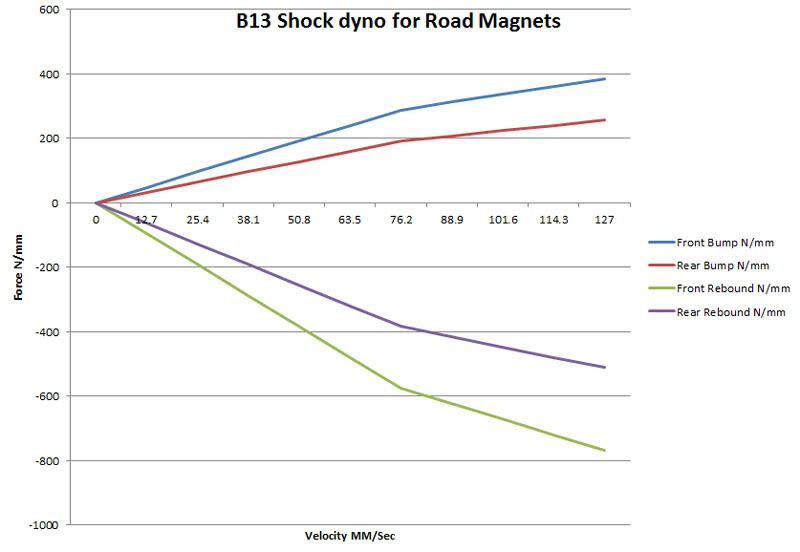Ok, so in my travels since my last B13, I've come across a bunch of cool general info on suspension tuning. I can attribute much of my knowledge to Dennis Grant's excellent Autocross to Win ebook: Autocross to Win (DGs Autocross Secrets) - ATW Home Page I HIGHLY reccomend checking this out if you have even a casual interest in how to set up your car's suspension.
Keep in mind that everything that I'm discussing here is academic, and there's a certain point where you actually have to put the stuff on the car and test it.
Suspension Frequencies:
The first step to tuning the suspension is to figure out what springs you have to work with. Different cars have different spring rates due to things like motion ratios and weight distribution, but you can do some math to come up with suspension frequencies that can be compared directly. Generally speaking, 1hz = comfort -1.5hz = sport - 2hz = competition. For an autocrosser or track car 2.2hz up front is generally regarded as a good starting point for maximizing tire grip on a sedan type car without downforce. The rear suspension has to react to bumps after the front, so we generally want to run the rear frequency slightly higher to keep the chassis "flat" over bumps.
Here's some examples applied to a B13:
Stock SE-R springs:

Hyperco:

Road Magnet:

Now, I've guessed at the unsprung weights and rear motion ratio (i need to know the angle of the strut) so this isin't 100% accurate. What we can observe from this is that the SE-R springs are actually pretty sporty, the hypercos (at the stiff end of their progressive range) are at the top of the range for a sporty spring, and the road magnets are just about a racecar spring. The hypercos also have a bit more forward bias to them, so they probably like slightly more rear swaybar than the stock or road magnet setups. Being somewhat of an outsider, this stuff more or less confirms the praise that everyone has for both of those setups.
I'll talk about shock forces next, once I have some time to play with the spreadsheet some more. If anyone has any B1# shock dynos, we can take a look at them.
Keep in mind that everything that I'm discussing here is academic, and there's a certain point where you actually have to put the stuff on the car and test it.
Suspension Frequencies:
The first step to tuning the suspension is to figure out what springs you have to work with. Different cars have different spring rates due to things like motion ratios and weight distribution, but you can do some math to come up with suspension frequencies that can be compared directly. Generally speaking, 1hz = comfort -1.5hz = sport - 2hz = competition. For an autocrosser or track car 2.2hz up front is generally regarded as a good starting point for maximizing tire grip on a sedan type car without downforce. The rear suspension has to react to bumps after the front, so we generally want to run the rear frequency slightly higher to keep the chassis "flat" over bumps.
Here's some examples applied to a B13:
Stock SE-R springs:

Hyperco:

Road Magnet:

Now, I've guessed at the unsprung weights and rear motion ratio (i need to know the angle of the strut) so this isin't 100% accurate. What we can observe from this is that the SE-R springs are actually pretty sporty, the hypercos (at the stiff end of their progressive range) are at the top of the range for a sporty spring, and the road magnets are just about a racecar spring. The hypercos also have a bit more forward bias to them, so they probably like slightly more rear swaybar than the stock or road magnet setups. Being somewhat of an outsider, this stuff more or less confirms the praise that everyone has for both of those setups.
I'll talk about shock forces next, once I have some time to play with the spreadsheet some more. If anyone has any B1# shock dynos, we can take a look at them.








 Be the first to like this post.
Be the first to like this post.



 Back to top
Back to top
